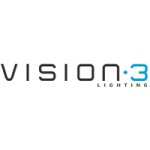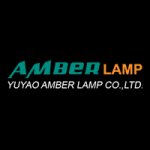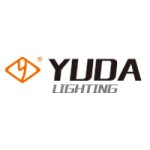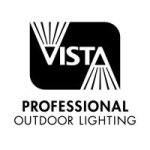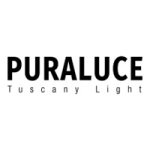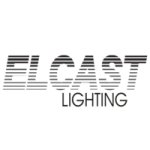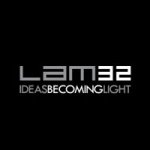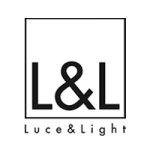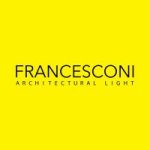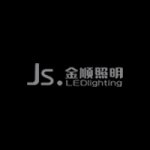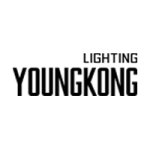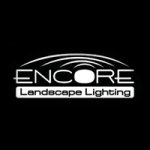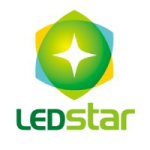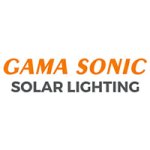Table of Contents Hide
- 1 Orchestrating the symphony of light
- 2 Nothing transforms your outdoor space more than lighting
- 3 Safety and security enhancement
- 4 The science and art of outdoor lighting
- 5 Creating a unified landscape with outdoor lighting
- 6 Beyond illumination, an artful expression of architectural design
- 7 The multifaceted design and engineering of outdoor LED lights
- 8 Sculpting light with precision: optical design in outdoor LED lights
- 9 Lighting control
- 10 Smart outdoor lighting
- 11 Types of outdoor lights
- 12 Power supply
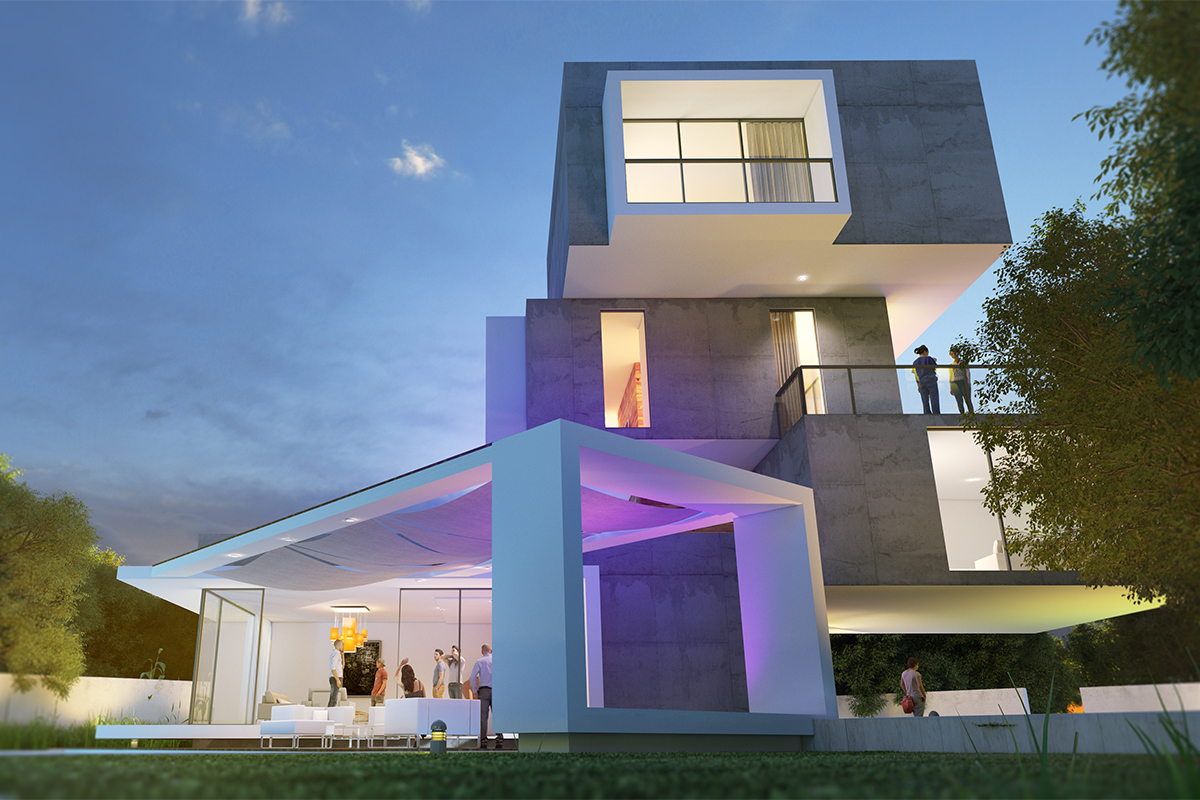
Orchestrating the symphony of light
Outdoor lighting is a strategic deployment of light in external spaces, showcasing a thoughtful arrangement to enhance the visual appeal and functionality of outdoor environments during nighttime hours. It seamlessly blends practical functionality with aesthetic considerations, emphasizing the enhancement of visual allure in outdoor environments while addressing safety and security concerns. Outdoor lighting encompasses the deliberate placement of lights in outdoor areas such as gardens, pathways, patios, façades, and landscapes. This may involve the use of various lighting fixtures, technologies, and design principles to achieve a balanced and visually appealing illumination of outdoor surroundings.Nothing transforms your outdoor space more than lighting
Among various elements or interventions, lighting stands out as the most impactful in terms of bringing about a positive change in the outdoor space. Well-placed and thoughtfully designed lighting can highlight architectural features, landscaping, and other elements, creating a more attractive and inviting environment.Adequate lighting allows you to make better use of outdoor spaces, such as patios, decks, and gardens, even after dark. This not only enhances the usability of these areas but also allows you to enjoy the beauty of your outdoor space during the evening hours. Outdoor lighting can set a mood or create a specific ambiance around your home. Whether it's a warm and welcoming entrance, a cozy backyard retreat, or a dramatic illumination of key features, lighting plays a crucial role in shaping the atmosphere.
Lighting plays a crucial role in establishing a seamless transition between indoor and outdoor spaces. By carefully designing and coordinating lighting elements, a cohesive visual experience that connects the interior and exterior of a property can be created. This continuity can make both areas feel like integrated parts of the same living space.
Safety and security enhancement
Outdoor lighting contributes significantly to safety and security by improving visibility, preventing accidents, deterring criminal activity, aiding surveillance, and facilitating emergency responses. A well-designed outdoor lighting system considers the specific needs and layout of the property to maximize its effectiveness in promoting a safe and secure environment. One primary functional purpose of outdoor lighting is to enhance visibility during the nighttime. This is crucial for safety, especially along pathways, driveways, and entrances, where proper illumination helps prevent accidents and ensures secure movement in the dark. In the event of an emergency, well-lit outdoor areas facilitate a quick and safe evacuation by providing clear exit paths.Outdoor lighting can act as a deterrent to intruders or unwanted activities by eliminating dark areas around a property. Well-lit exteriors contribute to a sense of security by reducing hiding spots and making potential threats more visible. Outdoor lighting enhances the effectiveness of security cameras by providing clear visibility, allowing for better surveillance and monitoring of the property. Motion-activated lights can startle intruders and draw attention to their presence. Automated lighting systems with timers or smart technology can create the illusion of an occupied property, enhancing security when residents are away.
The science and art of outdoor lighting
The process of creating aesthetically pleasing and effective outdoor lighting involves both scientific principles and artistic expression. Factors such as the intensity, color temperature, and direction of light play crucial roles in achieving practical and functional outdoor lighting. Engineers and designers need to consider issues such as energy efficiency, safety, and the environmental impact of the lighting system. The artistic component of outdoor lighting includes considerations of aesthetics, ambiance, and mood. Artists and designers use their skills to create visually appealing and emotionally engaging lighting designs. They consider factors like the architectural features of the space, the desired atmosphere, and the visual impact of the lighting on the overall environment. Successful outdoor lighting design requires a balance between the technical knowledge of lighting systems and the creative vision and expression of the designers. Achieving the right balance results in outdoor spaces that are not only well-lit for practical purposes but also visually captivating and emotionally evocative.Creating a unified landscape with outdoor lighting
Effective outdoor lighting plans often incorporate both general outdoor lighting and landscape lighting. This comprehensive approach ensures that functional needs, such as safety and security, are met, while also enhancing the beauty of the landscape. The relationship between outdoor lighting and landscape lighting is about achieving design harmony. The design of landscape lighting allows for flexibility and adaptability to changes in the outdoor environment, such as seasonal variations in plant growth. The placement, intensity, and color of light should complement the natural and built elements in the outdoor space.Landscape lighting is seamlessly integrated into the overall outdoor lighting scheme. The integration involves aligning the placement of landscape lights with functional needs, such as providing safety along pathways or defining outdoor living spaces. Outdoor light fixtures are strategically placed and configured to accommodate changes in the landscape without disrupting the overall lighting scheme. Fixtures may include in-ground lights, uplights, downlights, and other specialized lighting types that work together to create a cohesive and balanced look.
To achieve seamless integration, landscape lighting fixtures are chosen or designed to maintain a consistent style and aesthetic appeal with the surrounding outdoor lighting elements. The lighting effects produced by landscape lighting, such as uplighting trees or highlighting architectural features, are coordinated with the broader outdoor lighting scheme. This coordination ensures that the lighting effects complement each other rather than creating disjointed or conflicting visual elements.
Beyond illumination, an artful expression of architectural design
Outdoor lighting is not just about illuminating external spaces but is considered as an integral part of the overall design of the outdoor environment. The art of outdoor lighting usually merges with the field of architectural lighting design. When it comes to illuminating outdoor spaces, there is often an integration or overlap with the principles and practices of architectural lighting design. The design approach extends beyond mere functionality to embrace artistic and aesthetic considerations, aligning with the principles of architectural lighting. Just as indoor lighting can influence how we perceive and experience a space, outdoor lighting plays a crucial role in shaping our perception of the external environment, especially in the context of architectural structures. Outdoor lighting is approached as a creative medium, offering opportunities to sculpt the visual experience through the use of light. The nighttime ambiance is carefully curated through strategic lighting, adding an artistic dimension to the architectural elements. By integrating architectural lighting into the broader outdoor lighting scheme, designers create a cohesive, visually pleasing, and functional nighttime environment that highlights the beauty of both buildings and surrounding outdoor spaces.
The multifaceted design and engineering of outdoor LED lights
The adoption of LED lighting in outdoor applications has transformed the way we illuminate and interact with outdoor spaces, offering improved efficiency, durability, and adaptability to meet the diverse needs of various environments. Creating outdoor LED lights is a multidimensional engineering endeavor that requires expertise in electrical engineering, optics, thermal management, materials science, mechanical engineering, power electronics, control systems, environmental considerations, energy efficiency, and compliance with standards. Outdoor LED lights are not just functional devices; they also contribute to the visual appeal and ambiance of outdoor spaces. Aesthetic design considerations involve the physical appearance, style, and overall design of the lighting fixtures. The design must harmonize with the overall architectural and landscape design, creating a cohesive and aesthetically pleasing outdoor environment. Whether in a park, urban setting, or architectural facade, the design should complement and enhance the surroundings without appearing obtrusive. Outdoor LED lights must withstand a range of environmental conditions, including exposure to rain, snow, UV radiation, and temperature variations. Outdoor LED lights should be designed for straightforward installation and, if needed, easy access for maintenance to minimize downtime and operational disruptions.Sculpting light with precision: optical design in outdoor LED lights
Optical design is crucial for achieving desired lighting effects, minimizing light pollution, and maximizing energy efficiency. Optical design encompasses components such as lenses, reflectors, diffusers, and shields. The goal is to control the direction, intensity, and distribution of light to achieve specific lighting objectives. Outdoor environments present unique challenges, including the need to minimize light pollution, enhance visibility, and create aesthetically pleasing effects. The careful distribution of light to improve visibility in outdoor spaces is important for safety and security, especially in areas such as pathways, parking lots, or building entrances. The way light is spread influences not only the visibility and functionality of the space but also its overall visual appeal and the mood it evokes. Achieving specific lighting effects through thoughtful light distribution is essential for creating aesthetically pleasing and atmospherically rich outdoor environments. Obtrusive light can cause issues such as light pollution, glare, and discomfort for both humans and wildlife. Precision in optical control is vital in minimizing light spill and ensures that light is directed only where it is needed.Lighting control
Effective lighting control in outdoor environments is essential for achieving a balance between functionality, aesthetics, energy efficiency, and environmental considerations. It involves the use of various technologies and strategies to optimize the impact of outdoor lighting while minimizing any negative effects. This can include controls for brightness, timing, color, and other parameters. A well-designed outdoor lighting control system is characterized by its ability to provide the right amount of light, precisely directed to where it is needed, and activated at the appropriate times. There are various types of lighting controls designed for outdoor lighting to enhance functionality, aesthetics, and energy efficiency. Traditional manual switches allow users to manually turn outdoor lights on or off. Timers allow users to set specific times for outdoor lights to turn on and off. Motion sensors detect movement and automatically activate lights. Photocells measure ambient light levels and trigger lights to turn on when natural light diminishes. Dimmers allow users to adjust the brightness of outdoor lights. Choosing the appropriate lighting controls for outdoor applications depends on the specific needs of the space, desired functionality, and considerations such as energy efficiency and maintenance requirements. Often, a combination of these control types may be implemented to achieve a comprehensive outdoor lighting solution.Smart outdoor lighting
The integration of outdoor lighting systems with smart control technologies allows for remote control, automation, and dynamic adjustments based on environmental conditions or user preferences. This integration is part of the broader trend of integrating smart solutions into various aspects of our living spaces, enhancing convenience, energy efficiency, and overall functionality. Smart outdoor lighting systems incorporate sensors, controllers, and connectivity to enable intelligent control and automation. Integration with personal devices like smartphones enables users to interact with and control the outdoor lighting system. Through programming, users can create personalized lighting scenarios, sequences, and effects, allowing for a dynamic and customized outdoor lighting experience tailored to individual preferences or specific occasions. The integration of IoT technology takes smart outdoor lighting beyond traditional controls, allowing for advanced features, improved efficiency, and a more responsive and adaptive lighting environment. With IoT, outdoor lighting systems can be controlled remotely through a centralized platform. IoT-enabled outdoor lighting generates data that can be analyzed to gain insights into usage patterns, energy consumption, and system performance.Types of outdoor lights
There are various types of outdoor lights designed to serve different purposes and enhance the aesthetics and functionality of outdoor spaces. The choice of outdoor lights depends on the characteristics of the outdoor space, including its size, layout, and the desired atmosphere. Strategic placement of different types of lights can create a layered and balanced lighting scheme that caters to both functional and aesthetic needs.Path lights are low-level lights strategically placed along the sides of paths (pathways, walkways, or driveways) to provide visibility, enhance safety, and contribute to the aesthetic appeal of outdoor spaces. Path lights contribute not only to the practical aspect of outdoor lighting but also to the overall ambiance of a landscape. The fixture is mounted on a post or stake, allowing it to be easily installed along the edges of a path without obstructing the walking area.
Bollard lights are short, sturdy posts typically used to mark boundaries or illuminate pathways. They offer a combination of functionality and decorative appeal. These fixtures are commonly used in various outdoor settings to provide illumination along pathways, driveways, walkways, and other outdoor spaces. Bollard lights have a vertical, cylindrical, or rectangular shape, resembling a short post or pillar. These fixtures are designed to emit light in a 360-degree or targeted direction, depending on the specific design. The light can be diffused to illuminate the surrounding area or directed to highlight specific features.
Outdoor wall lights are designed for illuminating the exteriors of buildings, walls, or outdoor spaces. These fixtures serve both practical and aesthetic purposes, providing illumination for outdoor areas while contributing to the overall design and ambiance of the space. They may be installed near entryways, along pathways, on patios, or any other outdoor location where directed or ambient lighting is needed. Outdoor wall lights come in various styles, including sconces and lanterns, to suit different architectural preferences and outdoor aesthetics.
Outdoor ceiling lights are designed for installation on ceilings in outdoor spaces such as covered entryways, outdoor porches, patios, verandas. They provide a source of overhead illumination while enhancing the overall design and safety of the area. Outdoor ceiling-mounted lights can include flush-mount light fixtures that sit close to the ceiling or semi-flush mount light fixtures that have a slight gap between the fixture and the ceiling.
Pedestrian-scale lights, including post top lights, are fixtures mounted on posts and are commonly used for driveway entrances, or along pathways. These fixtures are commonly used to illuminate outdoor spaces such as pathways, driveways, gardens, and public areas. They come in various heights and styles, including traditional lantern-style fixtures, contemporary designs, or decorative area lights that complement the surrounding landscape or architecture.
In-ground lights, also known as ground lights or well lights, are installed flush with the ground, providing subtle and integrated lighting for pathways, driveways, or highlighting specific landscape features. These lights are designed to provide subtle and low-profile illumination while remaining unobtrusive during daylight hours.
Outdoor spotlights are directional lights that emit a focused beam of light. These fixtures are used for various purposes, including highlighting landscaping elements, illuminating pathways, enhancing building facades, and providing security lighting. Adjustable spotlights can be aimed precisely to create the desired effect. Their versatility and adjustability make them a popular choice for enhancing the aesthetics and functionality of outdoor spaces.
Outdoor floodlights emit a broad beam of light, covering a larger area. The ability to cast a wide and uniform light distribution over a designated space makes them suitable for lighting up expansive outdoor spaces. These fixtures are used in outdoor spaces for various purposes, such as illuminating large areas, accentuating landscape, enhancing security, and providing visibility during nighttime events. Many outdoor floodlights come with adjustable features, allowing users to change the direction, angle, or focus of the light.
Security lights are designed to deter intruders and enhance safety by providing high intensity illumination in areas prone to low visibility, such as entrances, pathways, driveways, and perimeters. Motion-activated lights turn on when motion is detected, while dusk-to-dawn lights stay illuminated throughout the night. Some security lights can be integrated into broader security systems, working in conjunction with cameras, alarms, or other security devices to enhance overall property protection.
Pool lights are watertight luminaires specifically designed for installation in and around swimming pools. These lights serve both functional and aesthetic purposes, providing illumination for nighttime swimming, enhancing the overall ambiance of the pool area, and contributing to safety. These lights are intended for installation within the pool structure, either mounted on the sides, positioned on the pool floor, or incorporated into the spa walls.
Outdoor string lights are strands of small bulbs connected by a flexible wire. The bulbs come in various decorative shapes, such as traditional round bulbs, globe lights, vintage-style Edison bulbs, or themed shapes, depending on the desired aesthetic. They are popular for creating a festive and cozy atmosphere in outdoor spaces, such as patios, decks, or gardens.


























